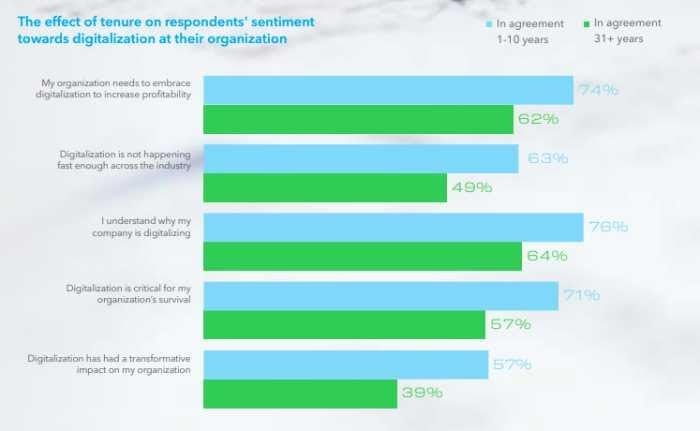
Digitization of the oil and gas industry is happening, but many challenges need to be addressed. For example, the lack of digital solutions for Quality Assurance and Quality Control (QA/QC) in the build phase has created a bottleneck in project lifecycle digitization efforts.
Below, we discuss how purpose-built QA/QC apps can improve efficiency and reduce errors.
Advantages of Digital QA/QC in the Oil & Gas industry
The Advantages of Digital QA/QC in the Oil & Gas industry can be broadly categorized into the following areas:
· Improves efficiency, reduces human error, provides accurate real-time data, streamlines processes, enhances collaboration, and increases profitability
· Automates manual processes and reduces inspection time by up to 60%
· Eliminates human error and improves data accuracy
· Integrates with existing systems, improves speed and efficiency, and reduces risk of errors
· Allows teams to collaborate and access information from anywhere
· Increases efficiency, reduces costs, and improves safety, leading to increased profitability.
The Current QA/QC Scenario in Oil and Gas
According to the "New Directions, Complex Choices," industry benchmark study that captured the sentiments of 1,031 senior oil and gas industry professionals representing 78 countries, 63% of short tenure staff and 49% of long tenure staff felt digitalization was not happening fast enough in their industry.

(Image source: dnvgl.com)
This points to one of two things – either the oil and gas industry is a late adopter of technology, or the available digital solutions for quality management and quality systems as a whole can't handle the complexity of the projects (or both).
There is evidence demonstrating that the oil and gas industry has historically been a late adopter of technology and stuck to outdated quality management systems. However, the pandemic precipitated the rapid uptake of technologies like cloud computing, drones, and remote working tools in a bid to adapt to the new reality. As a result, industry-wide digital transformation programs are underway. One goal is to digitize the end-to-end project lifecycle from planning and design through the build phase.
However, contractors seem to be getting stuck somewhere along the way in the build phase. Building Information Modeling (BIM), structural analysis, energy modeling, 3D walkthroughs, detailed specifications are all being done digitally. The quality of the planning and design has never been better. However, once handed over to the project implementation team, digitization gets sketchy. Contractors default to written daily reports recording activities and paper-based punch lists to record problems found. This is a quality management system that has proven not to be reliable. More importantly, an essential part is missed – verification that what is being built conforms to the design.
It's not that it doesn't get done, but most contractors resort to paper forms, spreadsheets, and email for quality control and quality assurance activities and inspections. It's the default solution when the available digital solutions can't rise to the challenge of the complexity of the projects. It's not that the build teams don't want to digitize; they don't have the appropriate tools. But, unfortunately, there is a price to pay. Projects run that on antiquated QA/QC inspection techniques suffer from:
- Unknown compliance with the design: The contractor has no clue whether they were building what was designed. Some project managers spend a lot of time figuring out why their subcontractors keep producing parts that don't fit anywhere in the plant.
- Feedback to the planning process is non-existent: The design team might as well not exist because no one knows how the project is going. If there isn't a problem, what's the point of communicating back to them?
- Supervision and control: Project controls underperform; resources (labour and equipment) sit idle waiting for work instructions and take twice as long to complete tasks, thus, not fulfilling quality requirements.
- Defects: Errors are 100% guaranteed if you don't do QA/QC inspections the right way.
- Building challenges: Due to the slowness and low visibility of paper-based QA/QC processes, in some cases, the first and only time the design team sees a fabrication is when it's completed. This can lead to costly changes as problems are identified after installation.
- Cost overruns: When quality decisions are made correctly at the beginning of the project, and throughout its tenure, there are no rework costs or scope creep due to change requests later.
Check out FTQ360's Oil and Gas QAQC Platform:
Purpose-built QA/QC Apps
Fortunately, there is good news here. Purpose-built QA/QC apps have risen to the challenge and are heavily quality management focused too. They focus on their mission of data-driven digitization of the QA/QC process. In addition, QA/QC apps come with rich feature sets that provide a single solution for even the most complex projects, including commissioning offshore well platforms often cited as the most demanding application for QA/QC software.
In addition, data integrations connect planning and design to the build phase and incorporate feedback from the build phase back to the design team. Purpose-build QA/QC apps can help you digitize your processes from design to the build phase, improve collaboration across all project stakeholders and ultimately, deliver projects faster.
Quality Assurance/Quality Control needs to be an integral part of your project software solution, which is achieved with purpose-built QA/QC apps.
Achieve First-Time Quality with FTQ360
FTQ360 is a QA/QC app that simplifies complex technical inspections in oil and gas. With FTQ360, you can plan and manage everything in one place: inspection planning and scheduling; engineering data management (electrical drawings); field reporting; product traceability; workflows; audits; supplier qualification and certification management. All of your quality control activities. From initial project kick-off to final acceptance testing, FTQ360 ensures that your team uses a single platform for clear communication between everyone involved. You are also guaranteed an effective and process-oriented QC system through remote technology such as video calls, photos, and videos shareable on any device.
For more information on how FTQ360 QA/QC app can help you achieve first-time quality with a great tool and quality management plan, check out our free demo.
